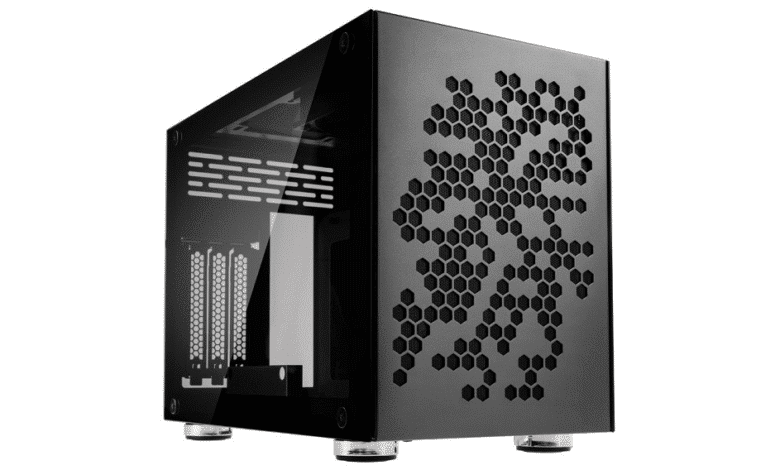
The manufacturer Kolink started in 2002 in Hungary with the sale of low-priced computer peripherals to hardware resellers. After the takeover by another owner in 2014, the range and portfolio were significantly expanded and Kolink has now gained Europe-wide recognition. The focus is now on the development of cases, power supplies and corresponding accessories. The products should primarily convince with a low price but a high-quality workmanship at the same time.
Two years ago and last month respectively, we tested two ITX cases from Kolink with the Rocket and the Rocket V2. Despite the chic look due to the use of aluminum, we were able to find certain weaknesses in the cooling of both cases. However, Kolink takes a slightly different approach with the Rocket Heavy. The Rocket Heavy offers more space for hardware due to a larger volume and should convince with a different layout and cooling concept. By reducing the aluminum elements, the price could also be reduced to 110 Euros. Whether the Kolink Rocket Heavy is recommendable at this price, you can find out in this review.
Technical details
| Model: | Kolink Rocket Heavy |
| Case Type: | ITX |
| Dimensions: | 180 mm (W) x 265 mm (H) x 350 mm (D) |
| Weight: | 4.75 kg |
| Material: | Aluminum, Steel, Tempered Glass |
| Color: | Grey |
| Front connectors | 1x USB 3.1 Type-C, 2x USB 3.0 Type-a, 2x USB 2.0 Type-A, 1x headphone, 1x microphone |
| Drive bays: | 1x 3.5″ (internal) 2x 2.5″ (internal) |
| Expansion slots: | 3x vertical |
| Form Factors: | ITX |
| Ventilation: | Lid: 2x 120 mm Side: 1x 120 mm |
| Radiators: | Lid: 1x 240 mm (max. 27 mm deep) |
| Max. CPU cooler height: | 55 mm/ 68 mm (if first PCI slot is not used) |
| Max. Graphics card length: | 340 mm |
| Max. Graphics card height: | 60 mm (3-slot) |
| Max. Net part length: | SFX/ SFX-L |
| Price: | € 78.81 * |
| Features: | Dust filter, PCIe-3.0 x16 riser, Tempered Glass |


Scope of delivery
.
Packed in a brown cardboard box, the Kolink Rocket Heavy is delivered. On the box, the manufacturer has placed a schematic drawing of the chassis, technical specifications and the main features in different languages. Inside the box, the SFF case is encased in soft foam and a plastic film. The included accessories have been placed in two places by Kolink. One bag contains all the necessary screws and a handful of cable ties. The PCI-3.0 x16 riser cable was placed in a separate white box and inside an anti-static film. The buyer has to download the installation instructions from the homepage. Lastly, the scope of delivery includes two pre-installed dust filters in the front and lid as well as the pre-installed 120 millimeter fan.
Exterior Impression
Visually, the Rocket Heavy is quite different from its brethren. As mentioned earlier, Kolink does away with aluminum elements in places on the Heavy. However, this does not apply to the interestingly designed front. Asymmetrical holes have been milled into the front panel. The structure is strongly reminiscent of a honeycomb, behind whose openings a filter mat made of mesh has been placed. However, the front panel and the dust filter cannot be removed.
Moving on to the upper section. The front and lid are made of a single, bent piece of aluminum. The I/O panel has been placed directly behind the bend. Unusually for an SFF case, this has been very lavishly equipped. There are five USB ports (1x USB 3.1 Type-C, 2x USB 3.0 Type-A, 2x USB 2.0 Type-A), two jacks for headphones and microphone as well as a power button. The rest of the lid’s design is characterized by large ventilation openings. Visually, however, Kolink relies on stripes here and not on the honeycomb look of the front.
The side panels of the Rocket Heavy are designed to showcase the installed hardware. On both sides, the manufacturer has applied Tempered Glass using four flat screws. Where Tempered Glass may still make sense on the graphics card side, the use on the other side is somewhat questionable. There you can only see the power supply, the cables and possible data carriers. From an optical point of view, an aluminum panel with ventilation openings would probably have made more sense here.
The back reveals a layout that is not often used in ITX cases. It is true that a sandwich layout is also used. However, the graphics card and motherboard are in the same chamber. Meaning the back of the GPU is right next to the CPU cooler. The three reusable PCI slot bezels on the right side already indicate that there is room for large graphics cards in the Rocket Heavy. To the left, the manufacturer has placed the opening for the I/O shield and the connector for the power supply.
The bottom side is visually a perfect copy of the lid. Ventilation openings in the form of stripes can be found here as well. Unlike the lid, however, steel is used here. So that the holes can also fulfill their purpose, Kolink lifts the Heavy from the bottom with four plastic feet in a silver HIFI look. A layer of rubber is supposed to reduce vibrations and protect the shelves from scratches.
The exterior finish leaves a good impression overall. The mixture of different materials like aluminum, tempered glass and steel is of course a matter of taste and automatically leads to slight color differences. Stability and build quality are, however, consistently on a good level on the outside.
Interior impression
Through the side windows, yes, a slight insight into the interior was already possible. Without glass, however, the interior can be viewed much better. This is basically divided into two chambers. The left chamber offers space for an ITX mainboard and in front of it for a 3-slot graphics card. The GPU is positioned vertically via a riser cable, which has to be screwed to the socket in the base. The socket itself is modular and can be repositioned depending on the GPU width. If you place the graphics card closer to the side panel, this increases the maximum possible height of the CPU cooler.
The second chamber offers space for an SFX (L) PSU and has a removable mounting frame for two 2.5″ or one 3.5″ media. The mounting is always done with simple screws. The base of the power supply is firmly attached to the bottom. Therefore, the screwing has to be done from the bottom. The base is also equipped with a small opening. This is used to feed the power cord through.
The two chambers are divided by the mainboard tray, which however protrudes further into the graphics card chamber in the area of the power supply. Behind the motherboard, the tray has a cutout for CPU cooler backplates and two cable management openings. The part behind the PSU features identical vents as the lid and base. An optional 120-millimeter fan can be attached to these.
Ventilation is a good keyword at this point. The Rocket Heavy has a mounting frame for two 120-millimeter fans underneath the lid. By removing four screws, the frame can be removed, populated, and reinstalled. However, Kolink has already taken some work off our hands here and provides the Rocket Heavy with a 120-millimeter fan. Unfortunately, we were able to see slight paint inconsistencies on one side of the frame.
System installation in the Kolink Rocket Heavy
Now we come to the system build. For hardware, we are using an AMD Ryzen 7 3700X* on a Gigabyte B450I AORUS WIFI with 32GB Crucial Ballistix Sport. The Ryzen is cooled by a Noctua NH-L12 Ghost S1 * and is not overclocked. A GTX 1060 6GB from Gigabyte AORUS is responsible for the image output. The power supply is handled by the fully modular Corsair SF450 Gold with an 80 Plus Gold efficiency rating.
Due to the layout, installing the components requires some planning. Since the GPU will cover the motherboard in the future, the motherboard has to be installed first, of course. After that, it is recommended to install the power supply as well as additional fans and the cabling of all available components. You should also not forget to turn on the power supply and push the power cable through the opening provided for it. Finally, the PCIe riser cable is attached and the graphics card is installed. Since our Noctua NH-L12 Ghost S1 has a height of 66 millimeters, we had to place the GTX 1060 closer to the side panel. Overall though the installation of all components was done after 30 minutes and makes, at least in the main chamber, a decent impression.
In terms of its hardware compatibility, the Rocket Heavy can also convince. Graphics cards are allowed to be 3-slots high and 340 millimeters long. That is enough even for the strongest pixel accelerators. However, the height of the CPU cooler is strongly dependent on the graphics card height. If you place a dual-slot graphics card closer to the side panel, the air cooler can be a maximum of 68 millimeters high. The second GPU position reduces this value to 55 millimeters. However, Kolink rather aims at using an AiO water cooling for the CPU cooling. However, the radiator and fan should not exceed a common depth of 52 millimeters.
The pre-installed fan has a frame width of 120 millimeters and is completely black. It is powered via a 4-pin PWM cable and reaches a speed of 1500 rpm. Operating at top speed produces an audible, but not unpleasant, background noise.
Lastly, we come to the temperatures reached in the Kolink Rocket Heavy. During the stress test, Prime95 and FurMark were run for 15 minutes at a room temperature of 24°C. Furthermore, the test was performed with two different fan speeds.
Scenario |
Temperature |
| CPU: 50% PWM (1300 rpm) GPU: 50% PWM (1650 rpm) 1x 120 mm on 50% (1000 rpm) (default configuration) |
CPU: 95 °C (CPU clocks down to 2.8 GHz) GPU: 82 °C |
| CPU: 50% (1300 rpm) GPU: 50% PWM (1650 rpm) 2x 120 mm on 50% (1000 rpm), 2x blowing out |
CPU: 94 °C (CPU clocks down to 3.4 GHz) GPU: 74 °C |
| CPU: 50% (1300 rpm) GPU: 50% PWM (1650 rpm) 2x 120 mm on 100% (1500 rpm), 2x blowing out |
CPU: 88 °C GPU: 68 °C |
As you can see, the use of fans in the Kolink Rocket Heavy is paramount if you don’t want the hardware to get too warm. The temperature levels of the graphics card can be brought well under control with a second fan in the lid. Unfortunately, it looks a bit different with the CPU. Due to the relatively small space behind the GPU, only low-profile air coolers fit there. If a full 3-slot GPU is to be used, we definitely recommend using a 240 AiO water cooler for the processor.
Conclusion on the Kolink Rocket Heavy
As mentioned at the outset, Kolink had a slightly different goal in mind with the Rocket Heavy. The brother of the normal Rocket is not only heavier, but also bigger and cheaper. The slightly larger footprint allows for the installation of full-sized 3-slot graphics cards and AiO water cooling in the lid. In addition, the Rocket Heavy can also convince with very good features and a well thought-out cooling concept.
However, if a stronger CPU is used, an AiO water cooling system is mandatory in order not to run into the temperature limit. Furthermore, the lower price demands a sacrifice in the material selection. Despite a similar paint finish, the combination of aluminum and steel automatically creates a slight color difference. In addition, there is a small paint flaw in the area of the fan frame. The rest of the workmanship was basically on a good level, though.
If you add up all the strengths and weaknesses and also bring the price of 110 Euros into play, then the Kolink Rocket Heavy is definitely a good alternative to other SFF cases in this price range. Nevertheless, there is enough strong competition.
Kolink Rocket Heavy
Workmanship
Structure
Features
Cooling
Value for money
87/100
The Kolink Rocket Heavy is a visually appealing and well-equipped SFF case. However, the use of an AiO water cooling system for the CPU is virtually mandatory when installing a high-performance gaming system.



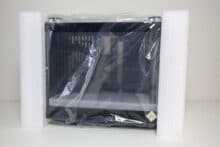



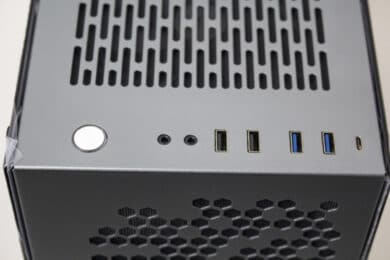
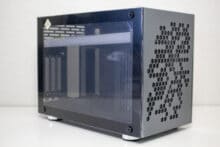
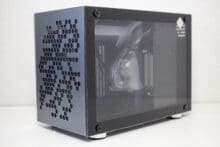
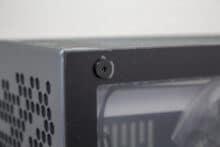
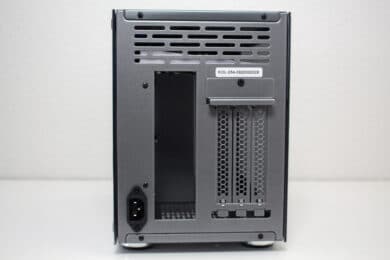
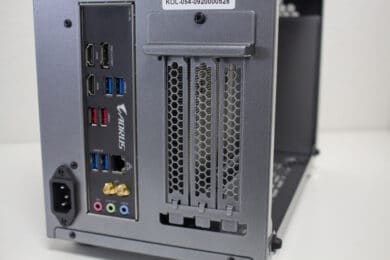
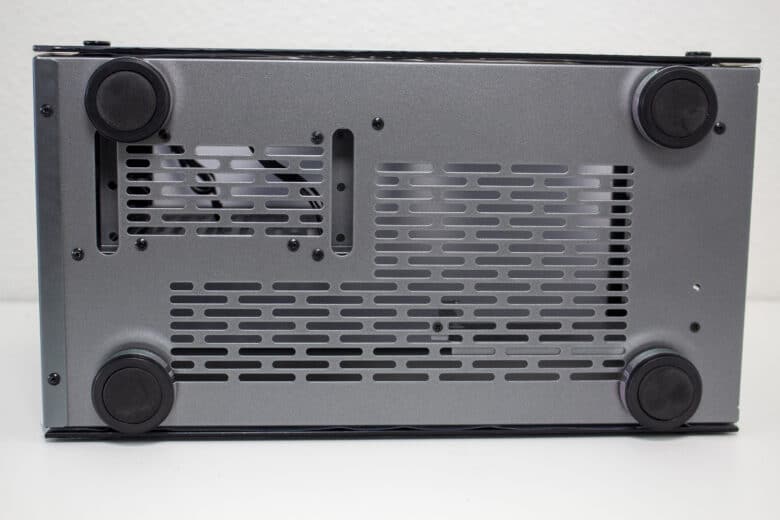
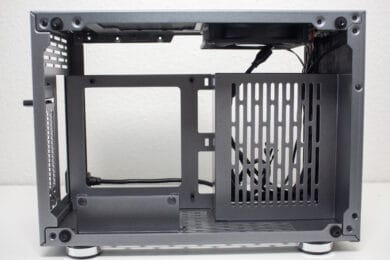


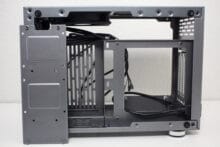
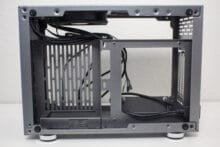

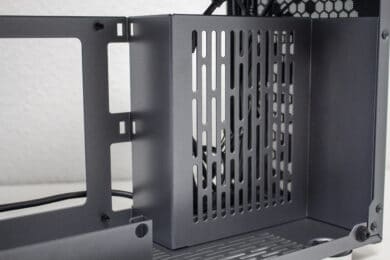

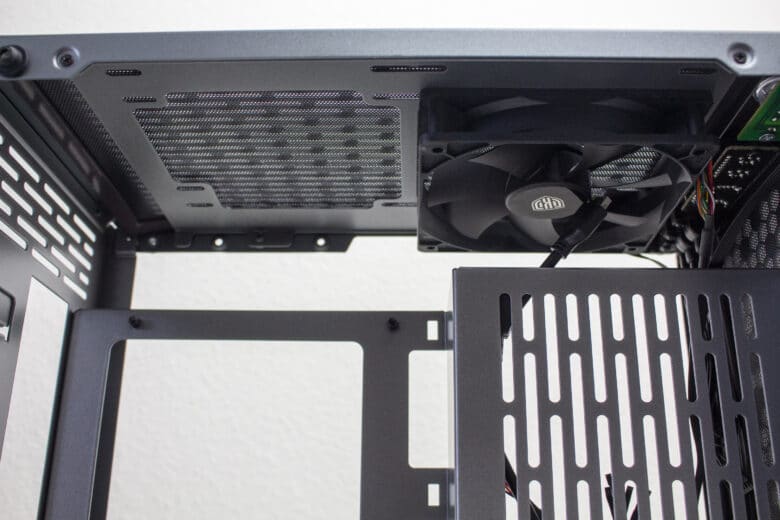
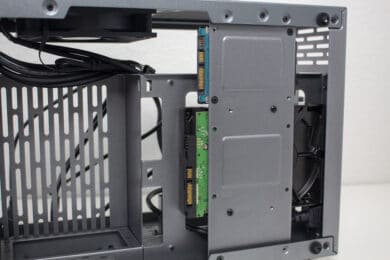
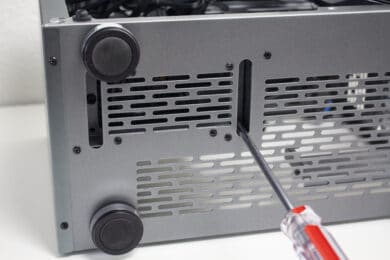
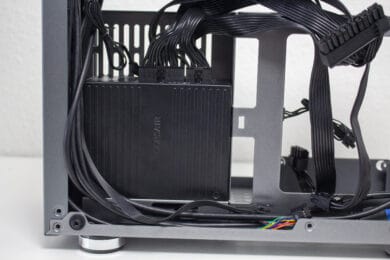
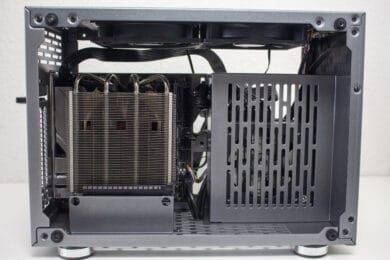
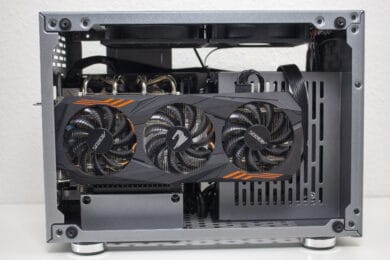
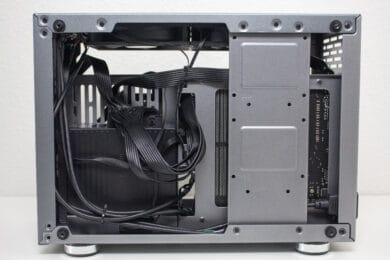



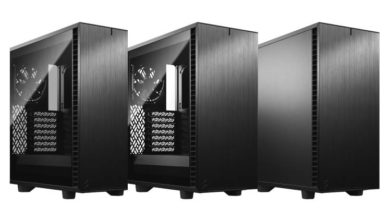
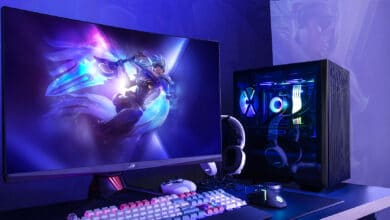
No replies yet
Neue Antworten laden...
Neues Mitglied
Beteilige dich an der Diskussion in der Basic Tutorials Community →